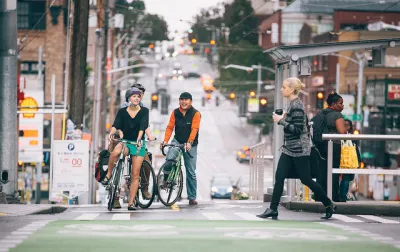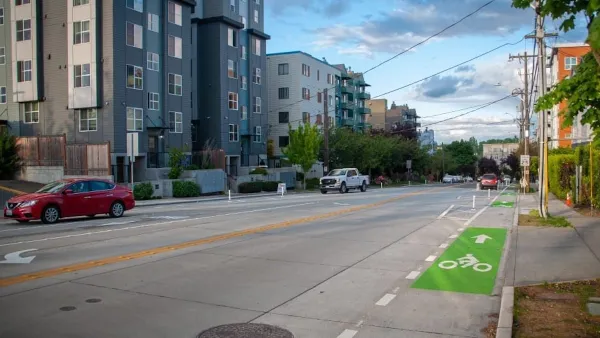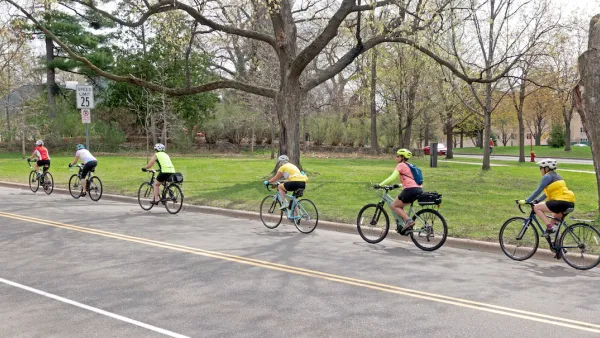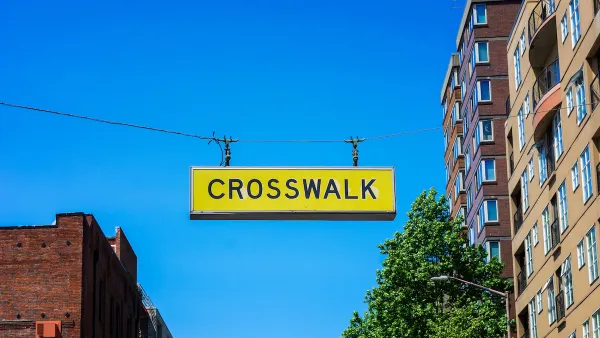Seattle officials hope a simplified design that avoids relocating railroad tracks will let the decades-old Ballard bike trail project move forward.

As Mike Lindblom reports, the city of Seattle has revised the design for a planned 1.4-mile bike trail along the Ballard waterfront, a project that has faced delays since the 1990s.
The trail, which would complete the Burke-Gilman Trail, has faced opposition from critics including the Ballard Terminal Railroad Co., the owner of tracks that the original trail design planned to relocate. According to Lindblom, "[f]ederal commerce law gives railroads the power to resist land takings, and a 2020 court ruling blocked the city’s goal to break ground last winter." Now, the new design keeps the bike trail in the same location but accommodates the adjacent tracks.
"The shared walk-bike trail will be 10 feet wide, rather than the previous 12-foot design. The city will rely on cheaper paint and plastic posts for two intersections, instead of concrete curbs and sidewalks," reports Lindblom. The new design does not address the safety concerns of opponents who insist that having to cross active truck driveways on Shilhole Avenue puts cyclists at risk. They suggest moving the trail inland to Leary Way.
Lindblom provides additional details on the trail's design and funding in the source article.
FULL STORY: Seattle simplifies Ballard bike-trail design to end a 20-year delay

National Parks Layoffs Will Cause Communities to Lose Billions
Thousands of essential park workers were laid off this week, just before the busy spring break season.

Retro-silient?: America’s First “Eco-burb,” The Woodlands Turns 50
A master-planned community north of Houston offers lessons on green infrastructure and resilient design, but falls short of its founder’s lofty affordability and walkability goals.

Delivering for America Plan Will Downgrade Mail Service in at Least 49.5 Percent of Zip Codes
Republican and Democrat lawmakers criticize the plan for its disproportionate negative impact on rural communities.

Test News Post 1
This is a summary

Test News Headline 46
Test for the image on the front page.

Balancing Bombs and Butterflies: How the National Guard Protects a Rare Species
The National Guard at Fort Indiantown Gap uses GIS technology and land management strategies to balance military training with conservation efforts, ensuring the survival of the rare eastern regal fritillary butterfly.
Urban Design for Planners 1: Software Tools
This six-course series explores essential urban design concepts using open source software and equips planners with the tools they need to participate fully in the urban design process.
Planning for Universal Design
Learn the tools for implementing Universal Design in planning regulations.
EMC Planning Group, Inc.
Planetizen
Planetizen
Mpact (formerly Rail~Volution)
Great Falls Development Authority, Inc.
HUDs Office of Policy Development and Research
NYU Wagner Graduate School of Public Service





























